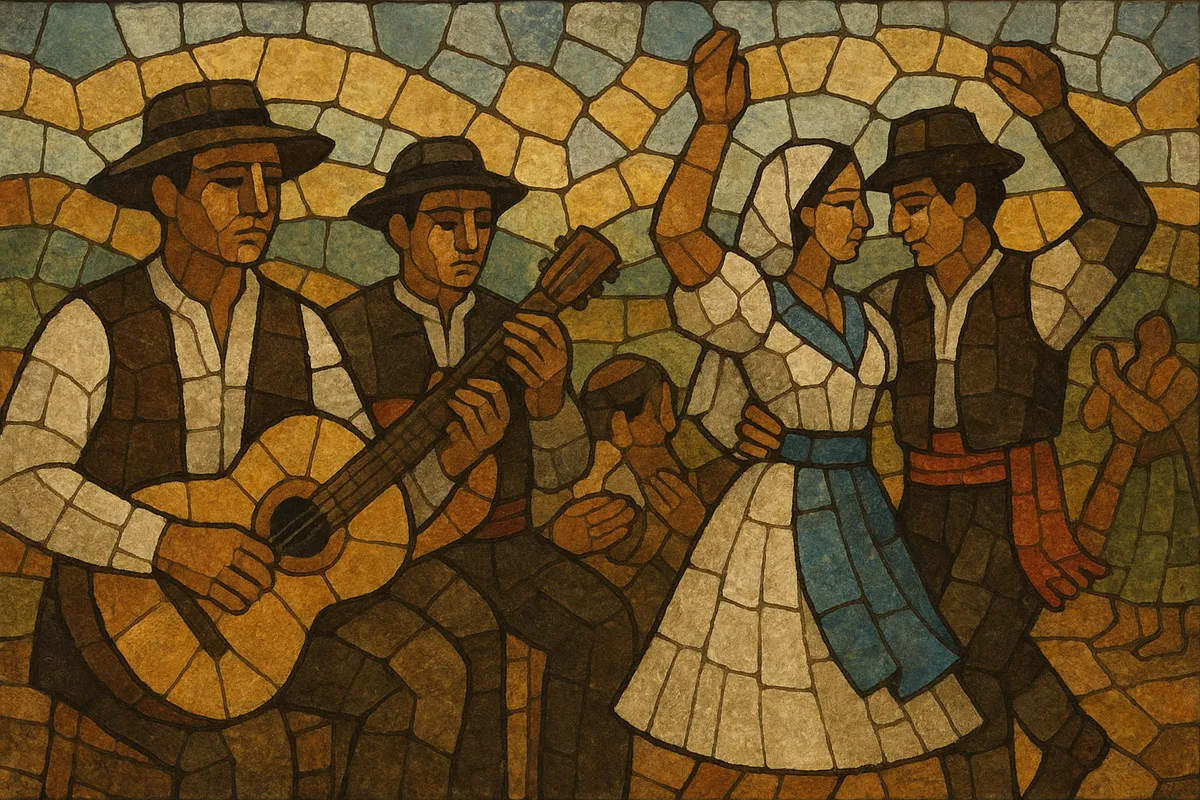Isa is a traditional dance-song genre from the Canary Islands (Spain), widely performed at fiestas, romerías, and social "parrandas".
It descends from Iberian dance-song forms—especially the jota and seguidilla—but took on a distinct Canarian character through local instruments, vocal delivery, and choreography.
Musically, it is typically in a lively triple meter (most often 3/4, with frequent hemiola interplay between 3/4 and 6/8), uses clear diatonic harmonies, and features strophic, singable melodies.
The classic ensemble is the Canarian rondalla: timple (small lute), Spanish guitars, bandurria and laúd, often with bass support, handclaps (palmas), and castanets; voices alternate between solo verses (coplas) and group refrains (estribillos).
Dance figures are performed by couples in lines or circles, with regional variants such as isa parrandera (faster), isa corrida, and isa lenta (slower), reflecting different community contexts and tempos.
Isa emerged in the Canary Islands during the 19th century as local musicians adapted popular peninsular Spanish dance-songs—above all the jota and seguidilla—to island performance practices. The incorporation of the timple and the consolidation of the rondalla ensemble gave the style its distinctive timbre. Verses (coplas) and refrains (estribillos) took root in community festivities, with choreography arranged for couples.
As rural-to-urban migration increased and radio and recording became common, isa spread beyond village fiestas to staged performances. Folklore groups and civic ensembles codified dance figures and standardized arrangements, while still leaving room for local variants (isa parrandera, isa corrida, isa lenta). Emigrant communities—especially in Venezuela and Cuba—helped circulate Canarian repertoires, keeping isa audible in diaspora contexts.
From the 1950s onward, professional and semi-professional groups (e.g., Los Huaracheros, later Los Sabandeños and Los Gofiones) popularized isa on records and tours, balancing authenticity with concert-hall presentation. Festivals, cultural institutions, and schools fostered transmission, while arrangers expanded the harmonic palette and ensemble sizes without losing the genre’s strophic backbone and triple-meter feel.
Today, isa remains central to Canarian folklore. It is taught in dance and music academies, performed by town ensembles and renowned groups, and occasionally fused with nueva canción, pop-folk, and orchestral textures. Despite modernizations, isa’s identity—lively triple meter, rondalla sonority, copla-based singing, and couple dances—remains intact.


